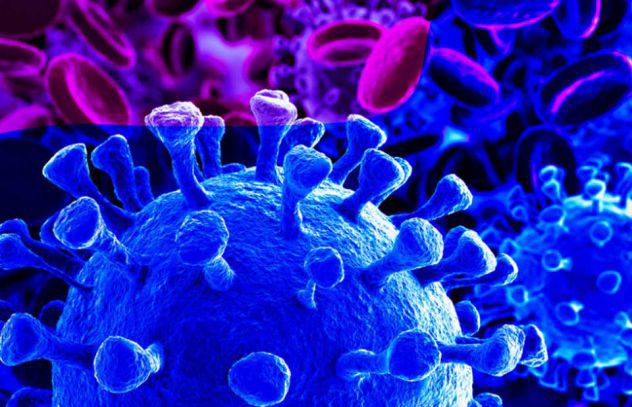State’s COVID-19 seven-day positivity rates ticking upward
Published 12:08 am Thursday, October 22, 2020

- COVID-19
Wednesday’s report on COVID-19 data from the Louisiana Department of Health shows the seven-day positivity rates inching up across the state.
Of the state’s 64 parishes, only 21 showed continued decreases in positivity rates, and only two remained stable. The other 41 all showed increases in their seven-day positivity rate.
In the Teche Area, only Iberia Parish showed a decline. Across the 22 Acadiana parishes, only six — Evangeline, Iberia, Jefferson Davis, Lafourche, St. Charles and St. James — posted decreasing rates.
Iberia Parish saw its seven-day rate drop by a full percentage point, from 4.2 on Oct. 7 to 3.2 Wednesday. St. Martin Parish’s seven-day positivity rate went from 4.1 percent on Oct. 7 to 5 percent in Wednesday’s report, and St. Mary Parish saw its rate climb from 3.6 percent to 4 percent. In Lafayette, the rate rose by a half a percentage point, from 3.7 percent to 4.2 percent.
Overall, the state added 744 new cases Wednesday, raising the total identified infections so far in the state to 177,399.
The state added 14,302 new test results Wednesday, making the rough positivity rate for that day’s tests 5.2 percent.
The state’s seven-day average of tests given as of Oct. 16, the last date reported, was 27.75 tests per 10,000 residents. The positivity rate among those tests was 5.41 percent.
In Region 4, the Oct. 16 testing rate was well below the state average, at 23.6 tests per 10,000 residents. The seven-day average percent positive of those tests was above the state average, at 5.71 percent.
According to the Wednesday update, the number of deaths attributed to COVID-19 rose to 5,584, an increase of 12 from 5,572 on Tuesday.
That rise represents an increase of 0.22 percent. The average age of fatal patients is 75, the median age 76. As of Oct. 14, 206 of those deaths were still considered probable COVID-19 fatalities pending final testing. The number of probable deaths attributed to COVID-19 is updated each week on Wednesday.
In Iberia Parish, the number of cases was at 3,049 Wednesday, an increase of six. The number of deaths remained at 93, with 35,042 tests performed in the parish. The LDH latest two-week incidence map update showed that the parish’s positive test rate rose 9.2 percent, from 107.13 cases reported per 100,000 population on Sept. 23 to 117 per 100,000 on Oct. 7.
St. Martin Parish’s number of identified cases remained at 2,183, with 30,749 tests performed. The LDH two-week incidence map shows that on Oct. 7, St. Martin Parish had 83.92 cases reported per 100,000 population, a 36.4 percent increase from 61.54 per 100,000 on Sept. 23. The number of deaths rose by one, to 63.
In St. Mary Parish, total cases rose by one, to 2,001, after 21,615 tests. The number of COVID-19 deaths remained at 84. The LDH incidence map shows that on Oct. 7 the parish had 116.53 cases reported per 100,000 population, down 39.7 percent from 162.74 on Sept. 23.
In Lafayette Parish, the Friday case count rose to 9,315, with the number of tests rising to 148,844. The number of deaths remained at 137. The LDH incidence map shows that the parish had 101.33 cases reported per 100,000 population on Oct. 7, down 15.5 percent from 119.86 on Sept. 23.
The number of cases in Jefferson Parish rose to 18,441 on Tuesday, an increase of 36, compared to 13,289 in Orleans Parish, an increase of 18. The latest data shows Orleans administered more tests, with 242,900 tests in Jefferson compared to 294,195 in Orleans.
Despite lower case numbers, the more urban Orleans Parish has seen 11 more deaths than its suburban neighbor. Orleans Parish deaths rose by three, to 592. In Jefferson Parish, the total number of deaths rose by one, 581. The LDH two-week incidence map shows that on Oct. 7, Jefferson Parish had 114.5 cases reported per 100,000 population, up 5.7 percent from 108.28 on Sept. 23. In Orleans, that number was 93.6 per 100,000 on Oct. 7, down 5.9 percent from 99.49 on Sept. 23.
The LDH reporting of data on hospitalizations due to the disease runs 24 hours behind its testing data. On Wednesday, the state reported 608 hospitalizations as of Tuesday, an increase of 22 from 586 on Monday. The number of patients on ventilators rose by six, to 68 Tuesday. That is up from 62 on Monday.
The number of COVID-19 hospitalizations in Region 4, which covers Acadiana, was up seven, to 62 Tuesday. The number of patients on ventilators Tuesday rose by two, to seven.
The overall intensive care bed occupancy rate in Region 4 was still high Monday at 84 percent, with 132 beds occupied and 25 ICU beds still available. The total number of ICU beds available was at 157. That is still down from the count of active ICU beds before Hurricane Laura, which hovered above 180.
Tuesday’s data showed that hospital bed occupancy in Region 4 was at 80 percent, with 1,227 of the region’s beds occupied and 305 available. The total number of reported beds was at 1,532.
When compared by age group, the number of cases in the 18 to 29 demographic was at 39,413 Wednesday. It is the demographic group with the largest number of identified cases by far. The number of deaths reported in the group remained at 25.
The number of COVID-19 cases identified in the 30 to 39 age group was at 28,470, with 80 deaths, followed closely by the 40 to 49 age group, with 26,140 cases and 180 deaths, and the 50 to 59 age range with 25,636 cases, including 481 fatalities reported.
The 70 and above group case count was at 20,405. The number of deaths in that group rose by 10 to 3,798 — still the largest number of fatalities for any age group by far, more than the number of deaths in all other groups combined and more than two-thirds of the total COVID-19 attributed deaths in the state.
In the 60 to 69 age group, there were 20,185 cases reported and 1,015 deaths. This age group has the second-highest number of deaths, behind only the 70 and above demographic group.
The under 18 group, the smallest demographic segment, had 16,941 cases total and five reported deaths.
According to Wednesday’s update, labs in Louisiana have processed at least 2,627,671 COVID-19 tests so far.
The state has also started tracking possible cases, which is the number of individuals with a positive test detecting SARS-CoV-2 antigens. That number was 3,733 as of Oct. 21. According to an LDH spokesman, individuals initially identified as having a positive antigen test who are later identified as having a positive confirmatory test will be removed from the probable case count and added to the cumulative case count.
By gender, the state’s daily report shows women making up the largest part — 55 percent — of the identified COVID-19 cases in the state, with men comprising 44 percent and 1 percent unknown. On the other hand, the COVID-19 deaths are predominantly among men, 52 percent to 48 percent for women.
The number of presumed recovered cases, as of Oct. 21, rose to 165,282. In order to be considered recovered, a living patient must either be out of the hospital and 14 days past a positive test result, or 21 days past a positive test date if their hospitalization status is unknown.
On Oct. 21, the weekly update of fatalities by race showed the percentage of COVID-19 deaths among White victims continued to climb. Initially, LDH reported that 70 percent of all COVID-19 deaths in the state were in the Black community. That number has since dropped to 45.44 percent as of Oct. 21, while White victims now make up 53.15 percent of all fatal cases.
The Native American/Alaskan Native total was at 0.11 percent. Native Hawaiian/Pacific Islander data remained at 0.08 percent. Other races identified include Asian at 0.7 percent and Other at 0.48 percent.
The number of Black deaths is still disproportionate to the demographics of the state’s population. African Americans make up less than 40 percent of Louisiana’s populace.
That data is only reported once a week, updated on Wednesday.
The top three underlying conditions among COVID-19 deaths in the latest report were hypertension (52.12 percent), diabetes (30.96 percent), and cardiac disease (20.68 percent).
Other factors included neurological disorders (19.68 percent), chronic kidney disease (18.07 percent), obesity (16.65 percent), congestive heart failure (13.3 percent), pulmonary issues (11.38 percent), cancer (6.63 percent), and asthma (3.37 percent).




